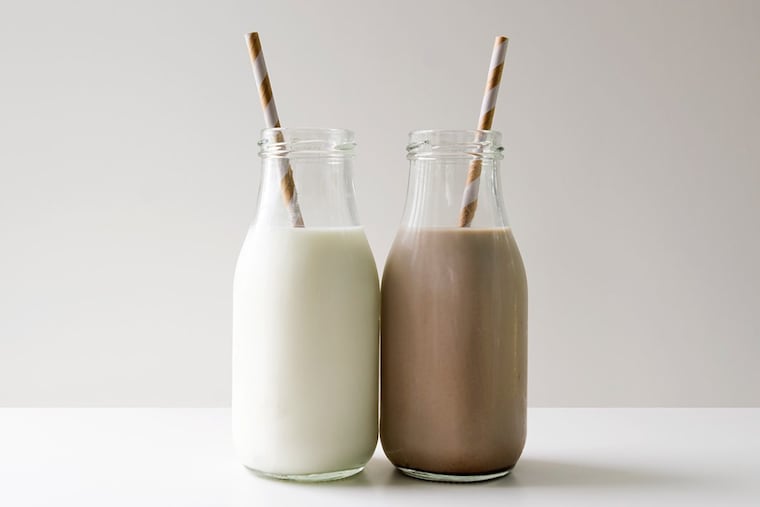Will kids drink plain milk if flavored is banned at school?
If flavored milk is taken away in school, most kids will adjust to drinking plain milk, a recent study found.

As a nutritionist, I am often asked by parents if it's OK for their children to drink flavored milk. My response is always the same: "I'd rather have your child drink flavored milk than drinking a soda or juice, since milk provides additional calcium, vitamin D, and protein." But what if flavored milk was not offered? Would kids avoid drinking milk altogether or adjust and drink unflavored milk instead?
Adjusting to drinking plain milk
If flavored milk is taken away in school, most children will adjust to drinking plain milk, according to a recent study in the Journal of the Academy of Nutrition and Dietetics. Researchers from the Rudd Center for Food Policy and Obesity at the University of Connecticut measured the amount of plain milk selected and consumed by elementary students, years after the school removed flavored milk from the lunch menu. The study showed 51.5 percent of the students chose and drank 4 ounces of plain milk the first year the flavored milk was removed. The intake of unflavored milk increased to 72 percent and 3.4 ounces were drunk the second year. Even though more students selected plain milk, the amount consumed remained about the same, except when 100 percent fruit juice was offered at lunch. During this time, students preferred juice to plain milk.
In a contrasting study, when flavored milk was banned, the proportion of students choosing white milk selecting increased, but up to 29 percent of the milk was thrown away. The study found that removing chocolate milk from school cafeterias may reduce calorie and sugar consumption, but may also lead students to take less milk overall, drink less (waste more) of the white milk they take, and to stop buying school lunches.
Risks of added sugars in flavored milk
This leads us ti the larger question: Do we really need to be concerned about our children drinking just 8 ounces of flavored milk at school? Eight ounces of plain low fat milk contain 100 calories and 12 grams of naturally occurring sugar; 8 ounces of flavored low-fat milk contain approximately 150 calories and 24 to 26 grams of sugar (12 grams of added sugars). Children would get approximately 40 percent of their daily allowance of added sugar from one 8-ounce serving of flavored milk.
Children ages 2-18 should consume less than 25 grams of added sugars daily (100 calories, or 6 teaspoons), and children under 2 should avoid added sugars altogether, according to the American Heart Association. The amount of added sugar from flavored milk can make a difference over time, especially if the children's diet is already high in added sugars, which can lead to increased risk of heart disease and diabetes and ti excess weight gain.
Risks of not drinking milk
By avoiding flavored milk, you may be cutting out added sugars and calories, but you are also cutting out nine essential nutrients. Even though the AHA recommends to reduce added sugars, the organization still identifies the benefits of flavored milk how it could be added for occasional use.
At home, I encourage families to purchase plain milk to avoid the added sugars, but to turn to flavored milk as an option if the child refuses to drink plain milk. Flavored milk should be limited to 8 ounces daily, but parents could dilute the flavored milk with plain or mix their own flavored milk to reduce the amount of added sugars. If your school offers flavored milk, encourage your child to drink the milk since it is a healthier alternative to choosing other foods at lunch with added sugars such as cookies and desserts.